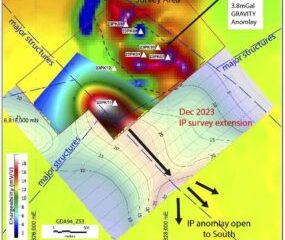Base Metals
How Can Tesla Shift Away From Rare Earths
At Tesla’s Investor Day in March 2023, it announced that its next generation of electric motors would contain no rare earth materials. Given Tesla Inc…


At Tesla’s Investor Day in March 2023, it announced that its next generation of electric motors would contain no rare earth materials. Given Tesla Inc (NASDAQ:TSLA)’s huge presence in the EV (electric vehicle) market, this could prove a significant transition for the design and sustainability of electric motors.
Tesla’s Shift Away From Rare Earths
Tesla’s early vehicles including the original Model S and X used an induction motor, where a copper or aluminum cage is used on the rotor (the rotating part of the motor). With the release of the Model 3 in 2017, it adopted the use of a permanent magnet (PM) motor where strong magnets are used to generate a magnetic field on the rotor.
Get The Full Henry Singleton Series in PDF
Get the entire 4-part series on Henry Singleton in PDF. Save it to your desktop, read it on your tablet, or email to your colleagues

Q4 2022 hedge fund letters, conferences and more
Whilst it retained an induction motor for its secondary drive unit (providing boosts of acceleration when needed), the switch to a PM design enabled greater efficiency and power density. In 2022, IDTechEx research found that over 80% of the EV motor market was accounted for by PM motors.
The downside to PM motors is the materials used to make the magnets, namely rare earths. This category includes materials like neodymium and dysprosium that are high-cost and have a geographically constrained supply chain.
China accounts for the vast majority of worldwide production which has historically led to price volatility. Back in 2011, China restricted exports of rare earths seeing an approximate price rise of 750% and 2000% for neodymium and dysprosium respectively.
Towards the end of 2020, prices started to rise again with the price in 2022 averaging approximately 2.6 times greater than in 2017. In addition to the price concerns, there are environmental concerns. Rare earth mining can produce wastewater that acidifies the surrounding soil and groundwater. Radioactive and heavy metal waste is another potential byproduct of rare earth mining.
The Future Of The EV Market
Some manufacturers like Audi and Mercedes adopted for induction motors to avoid PM concerns and BMW and Renault have opted for a wound rotor configuration. These designs are typically heavier and less efficient overall, but great progress has been made to minimize these downsides.
Whilst Tesla has suggested that its new motor will be rare earth free, crucially it is still a PM motor. Some manufacturers, including Tesla, have steadily reduced the rare earth content, especially heavy rare earths, in PM motors.
But to be rare earth-free, alternative magnetic materials like ferrite-based magnets or other alloys are required. Typically, these have a much weaker magnetic field, leading to a less power-dense motor.
There are a few strategies that Tesla could have taken to make this transition, but likely a combination of developments in magnetic alloys to improve field strength and increasing the size of the motor to provide similar outputs while taking a hit in power density, as drivers won’t notice unless it impacts performance or cargo space.
We won’t know the exact details of the new design or the materials used until a later date, but it will be interesting to see if (and can) the rest of the EV market follow suit. Tesla alone dropping rare earths could make an impact on overall demand, but if other automakers adopt a similar strategy, this could be a big market shift to a more sustainable and less price-sensitive alternative to rare earth magnets.
IDTechEx’s report, “Electric Motors for Electric Vehicles 2022-2032”, takes a deep dive into the types of electric motors used in electric vehicles as well as emerging alternatives like axial flux and in-wheel motors.
The report considers the EV market for cars, buses, trucks, vans, and two-wheelers across China, Europe, and the US, including forecasts for motor demand over the next 10 years. Granular motor performance statistics are given for these categories and regions including a detailed power and torque density benchmark of several motors used currently in BEVs, PHEVs, and future alternatives.
The materials used in the motors are also considered, addressing rare earths in magnets in addition to copper and aluminum used in the motor windings, with material demand forecasts out to 2032.
To find out more about this IDTechEx report, including downloadable sample pages, please visit www.IDTechEx.com/Motors.
About IDTechEx
IDTechEx guides your strategic business decisions through its Research, Subscription and Consultancy products, helping you profit from emerging technologies. For more information, contact [email protected] or visit www.IDTechEx.com.

White House Prepares For “Serious Scrutiny” Of Nippon-US Steel Deal
White House Prepares For "Serious Scrutiny" Of Nippon-US Steel Deal
National Economic Adviser Lael Brainard published a statement Thursday…
How to Apply for FAFSA
Students and families will see a redesigned FAFSA this year. Here’s how to fill it out.
Dolly Varden consolidates Big Bulk copper-gold porphyry by acquiring southern-portion claims – Richard Mills
2023.12.22
Dolly Varden Silver’s (TSXV:DV, OTCQX:DOLLF) stock price shot up 16 cents for a gain of 20% Thursday, after announcing a consolidation of…


















